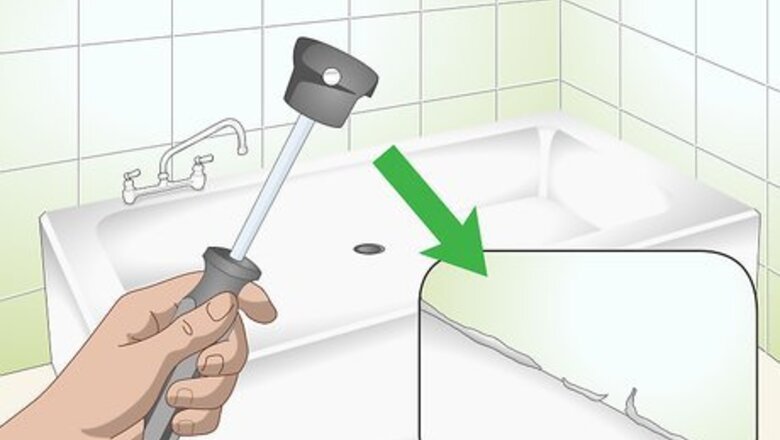
views
Removing Existing Caulk
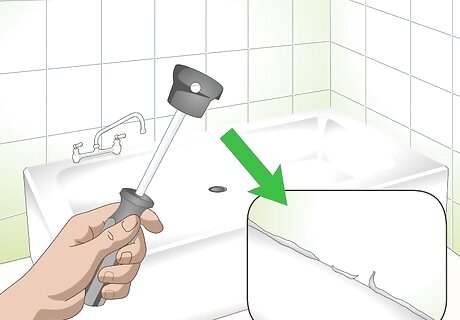
Use a razor scraper or a very sharp 1/2" wood chisel to remove the old caulk. If your tub is not steel, first try using a plastic scraper to prevent scratching it. Although you can buy specialty caulk removers, these can damage plastic bathtubs. Fiberglass and acrylic tubs can also be easily scratched. Use plastic scrapers when using these also.
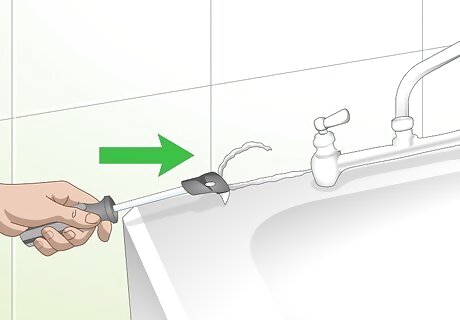
Place the blade or chisel flush against the surface of the bathtub, and use small, quick strokes to scrape the caulk. This will remove the caulk from the surface cleanly. After you have gone around the bathtub removing old caulk, do a final check to find any spots you may missed. Use tweezers to pry out any hard to reach caulk.
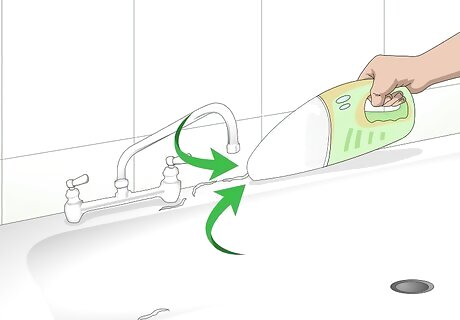
Clean up the pieces of old caulk to prepare the surfaces for the new caulk.
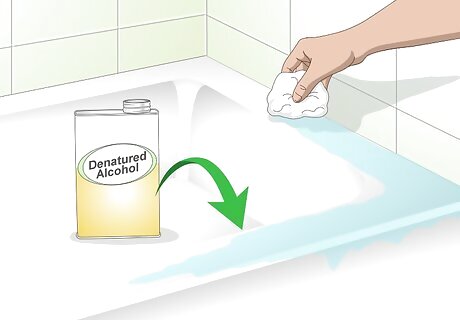
Wipe down the bathtub with denatured alcohol. This cleans well and dries faster than water. Use denatured alcohol to remove very small remaining pieces of caulk.
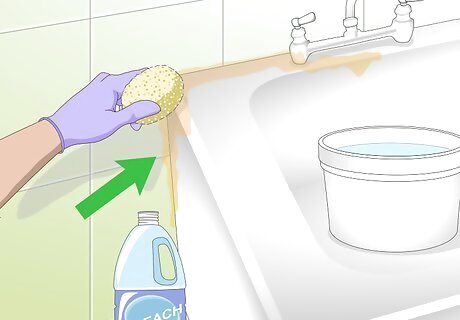
Use a bleach solution to remove any mildew or mold. Mix ⅓ cup (80 ml) of bleach with 1 gallon (3.79 L) of water. Wear gloves and make sure the room is well-ventilated. Use a stiff brush (not a metal brush) to scrub the bathtub and the edges where caulk was removed. Let the solution dry fully. Leaving it overnight and keeping it well-ventilated is best.
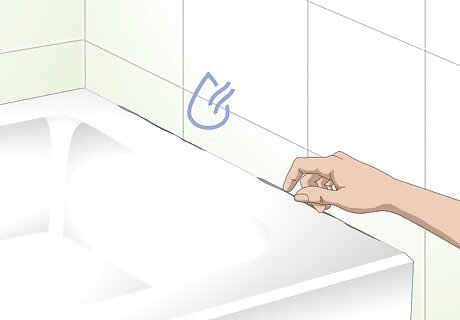
Check that the crack appears dry. If a shower in the bathtub was used that day, there may be water behind the walls which drips down slowly throughout the day. This would ruin caulk that isn't dry. If a crack is wet, use a hair dryer to dry it.
Applying the Caulk
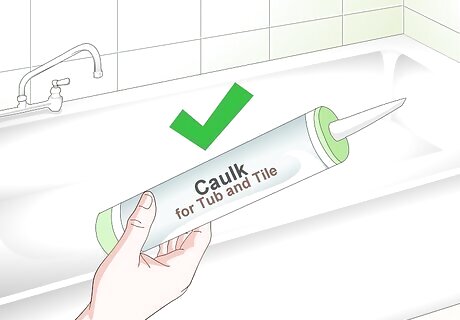
Buy "Tub and Tile" or "Kitchen and Bath" or "caulk. These are basically different names for the same type of caulk. They are available as silicone and acrylic latex. Your choice of caulking may depend on its drying time and how long can you avoid using the bathtub. Some products dry in 30 minutes and some take 12 hours. Buy a product that is "mold-resistant", so it doesn't turn green. For fiberglass bathtubs, silicone caulk is usually the best to use. It comes in a limited color palette and is difficult to smooth, yet is very flexible. For ceramic tubs, acrylic latex can be used. It is easier to clean up than silicone and is available in several colors, but some brands are much less durable than silicone caulk.
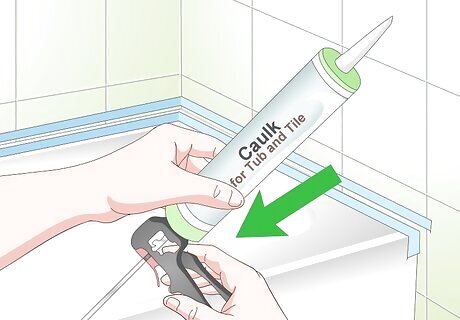
Load the caulking gun with the caulk tube. Use a utility knife to cut the tip off the caulk tube at a 45-degree angle. Push the stick on the application gun through the nozzle of the caulk tube to break the seal.
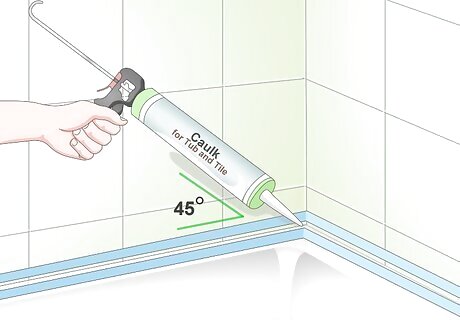
Hold the caulking gun at a 45-degree angle from the edging. This means that the gun will be at an equal distance from either side of the corner where the caulk will go. The nozzle will be very close to the seam.
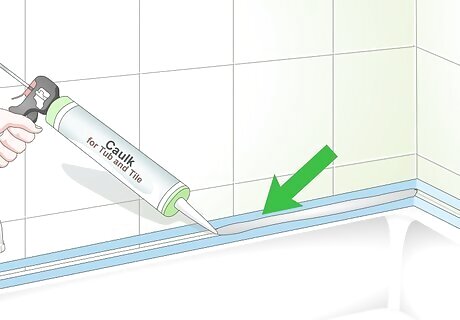
Apply the caulk to the seam. Use a steady pressure on the gun to very carefully apply the caulk in the gap. Move the gun smoothly around the entire edge. You can either pull the gun towards you or push it away from you as you apply the caulk. It works the same either way, so stick with what is comfortable.
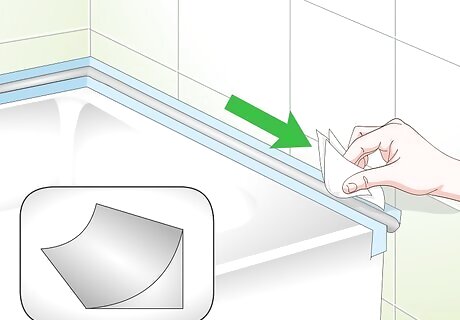
Smooth the caulk to form a concave shape. Dampen either a paper towel or a lint-free rag. Press it softly into the seam using your finger, and carefully run it along the caulk in one continuous line. You can also use painter's tape to press down the caulk. Just be sure to pull the tape away before the caulk gets tacky.
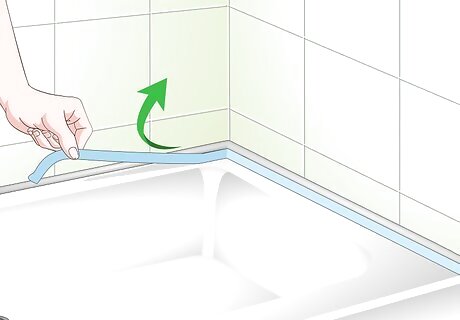
Remove the painter’s tape. Peel away all of the strips of painter’s tape from around the bathtub. This will remove any excess caulk and create a nice, straight line along the seam. Try and work as quickly as possible to remove the tape, as you also have to smooth the caulk again. Be as careful as possible when removing the tape, and try not to let it touch the caulk seam.
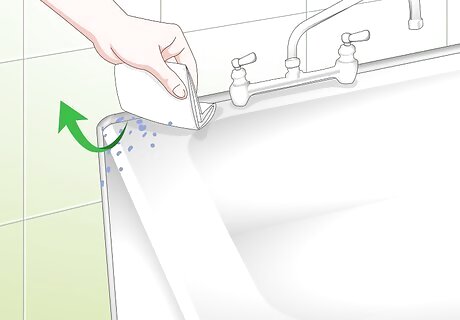
Get rid of any small ridges left by the tape by smoothing the caulk again. Use a damp paper towel or lint-free rag again to smooth over the caulk. This will ensure that the whole caulk edging is seamless. Focus particularly on areas where 2 pieces of tape met, and these leave a small ridge.


















Comments
0 comment